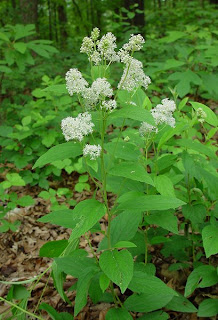SAFFRON

Latin Name: Crocus sativus
Alternate Names: Saffron Crocus, Spanish Saffron, Nagakeshara (Sanskrit), Zang Hong Hua (Chinese)
Family: IRIDACEAE
Parts Used: Flower stigmas and styles collected in autumn.
Properties: Abortifacient, Alterative, Anodyne, Antispasmodic, Aperient, Aphrodisiac, Carminative, Diaphoretic, Emmenagogue, Rejuvenative, Sedative, Stimulant, Stomach Tonic.
Internal Uses: Anemia, Arthritis, Asthma, Cholera, Cough, Depression, Diarrhea, Dysmenorrhea, Gout, High Cholesterol, Hypertension, Hysteria, Impotence, Infertility, Liver Enlargement, Measles, Menopause, Neuralgia, Rheumatism, Scarlet Fever, Shock, Spleen Enlargement
Internal Applications: Tea, Tincture, Capsules.
Saffron helps chronic coughs and chronic diarrhea. Crocetin increases oxygen content in the blood which may contribute to the prevention of plaque buildup in the arteries.
Saffron helps chronic coughs and chronic diarrhea. Crocetin increases oxygen content in the blood which may contribute to the prevention of plaque buildup in the arteries.
Topical Uses: Bruises, Neuralgia, Rheumatism
Topical Applications: Used in cosmetics as a coloring agent and as a compress for bruises, neuralgia and rheumatism. Used in perfume.
Culinary uses: Used as a food coloring and in Saffron rice, paella, Bouillabaisse, Cornish cakes, Pennsylvania Dutch cooking, Schwenkfelder cake, soups, breads, Chartreuse and liqueurs.
Energetics: Pungent, Sweet, Bitter, Neutral.
Chemical Constituents: Essential oil (cineole, safranal, terpenes), bitter glycoside (crocin), crocetin, picrocin, carotenoids, vitamin B-1 and B-2.
Contraindications: Excessive use may be damaging to the kidneys and central nervous system. Large doses may cause coughs, headache, as well as have narcotic properties. It is potentially lethal. Avoid therapeutic doses during pregnancy. Saffron is frequently adulterated with marigold, safflower or turmeric, so buy the whole stigmas, rather than the powder, so as to be sure of paying for the real thing. Avoid large doses during pregnancy.
Comments: The genus name is from the Greek krokos, meaning 'thread' in reference to the plant's stigmas. Sativa refers to the plant's long history of cultivation. Legend says that Crocus was the name of a beautiful young man that Hermes loved, but killed accidentally. Where his blood spilled onto the Earth is where the Crocus first bloomed. To the Greeks, Saffron represented beauty, life and youth and was thus given as a gift to newlyweds. Saffron is the world's most expensive herb. It requires at least 75,000 stigmas that, after flowers dry, yield just one pound of saffron, or over 4,000 stigmas for one ounce. After three years of growth each plant has only three stigmas, and after two years the Saffron bulb must be retired. Thus, it is an expensive business venture indeed! Adulterating Saffron in the 1400's was punishable by death. In Ayurvedic Medicine, it helps to enhance qualities of love and spirituality. Saffron is valued as an important dye plant. Crocin is the substance that yields the coloring and is so potent that only one gram can color 100 liters of water.

